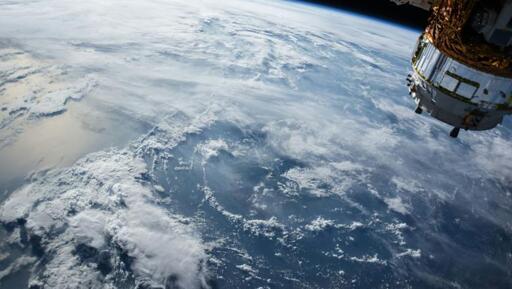- cross-posted to:
- technology@lemmy.world
- cross-posted to:
- technology@lemmy.world
In what world is it cheaper to put solar in orbit, then somehow transmit collected power down to the surface and distribute it, vs just slapping solar panels on peoples roofs…?
A world with gullible VCs.
In a world that has clouds
Even with clouds you’re probably still better off with solar and batteries.
And night.
And latitudes above 40degrees.
How are you going to get the electricity from space to the ground?
Microwave transmission. Very clever and quite cool.
You beam microwave power to the surface where it is absorbed, converted to electricity, and added to the grid.
Microwaves can easily penetrate cloud cover and other things that block or attenuate visible light. You get predictable, continuous power generation—perfect for direct integration to the grid. No batteries.
Only during the day of course but that is when energy demand is greatest and when you do not want excess capacity.
Plus if your neighbors piss you off you could accidentally have a targeting problem and melt their capital city. Whoops, sorry Vlad!
This sounds like Golden Eye with extra steps.
The difficulty and amount of energy required to build, launch and assemble orbital power stations mean the energy they produce would be too expensive — 61 cents per kilowatt-hour, compared with as little as 5 cents per kilowatt-hour for Earth-based solar or wind energy.
In addition, the overall carbon footprint of the power production and the amount of greenhouse gas emissions generated by rockets taking those assemblies into orbit make space-based solar power much less climate-friendly than technologies used on Earth. For example, a gigawatt-scale spaceborne solar power station, such as the CASSIOPeiA concept plant proposed by the U.K. firm Space Solar, would need 68 Starships to get to space.
Even if you ignored the energy and pollution requirements, now we will have to fill up our atmosphere with satellites. Remember when Elon started doing the same with his satellites for internet and other things? Astronomers weren’t (and still aren’t) happy with it because it pollutes their images of space.
Not only does the number of satellites have an impact on astronomy, the more stuff is up there, the more it’s in danger of getting hit by space junk and generating more junk! If we keep doing that, we might surround this planet in a cloud of junk that males leaving the planet very difficult or impossible.
Normally, I’d find that funny as the 1% wouldn’t be able to execute the escape plan when the planet becomes unlivable, but I somehow doubt it will slow them down.
And finally, transmitting energy still has to deal with physical realities: the inverse square law. Clouds aren’t omnipresent but this law is.
This idea is nice for a pristine planet, but we are long past that point.
Thank you for pointing this out. I think most people don’t understand how bad Kessler Syndrome would be for us humans and seems to be greater possibility with more countries testing satellites with custom weaponization for their own deorbiting (so far at least).
I share your concern about putting too much in orbit. The rest is FUD.
Terrestrial solar cannot provide 100% of the electricity. What we are talking about here is continuous base load power. The only options today are nuclear or burning fossil fuels. That is what we need to compare this to.
It is theoretically possible to generate enough terrestrial solar and to store it in batteries to provide power continuously to the grid. What would such a system look like that could provide all the energy needs for a country like the UK? Consider, there can be entire months of total cloud cover in the winter. And even the clearest months are overcast half the time. And, you know, the night.
https://weatherspark.com/y/147871/Average-Weather-at-London-Weather-Centre-United-Kingdom-Year-Round
How are we transmitting that power to where it is needed? Any losses there?
The square law is a thing but we all know there is a difference between a laser and a flashlight. And the collector will clearly be bigger than the transmitter. With advanced beam forming, microwave transmission can be very efficient. And it can be sent to wherever you need it. No other transmission losses.
As for cost, if NASA two years ago thought it would cost 61 cents per kWh, I am quite optimistic. There are many, many ways this cost will come down over time. Look at the reductions and improvements in solar overall. The input cost (the sun) is free. So we are talking about process engineering. We are good at that. But even this worst case number does not need to drop by much we we do proper accounting.
Again, the comparison here is to other alternatives for baseload power. And nobody is trying to build space solar at scale this year. This does not have to replace terrestrial solar. We should do that too, as much as we can. What we are talking about here is being able to turn off the coal plants. You don’t want that?
The rest is FUD.
Oh yeah, all that I posted doesn’t have any sources attached to it. And gigawatt factory the UK proposed isn’t even enough for “baseload” which is close to 30GW. Cassiopeia is 3GW last I read. So that’s 64 trips to the atmosphere to put 10% of base load there. For one country. But that’s FUD, of course.
The only options today are nuclear or burning fossil fuels
Sure. Wind power doesn’t exist nor does water power. All dreams I had.
Consider, there can be entire months of total cloud cover in the winter. And even the clearest months are overcast half the time. And, you know, the night.
Oh, yeah the UK doesn’t import power at all, no. It’s autark and self reliant. It can’t depend on power from abroad, that would make it dependent on other nations. And if there’s cloud cover in the UK, that means it’s all over the world at the same time too. And naturally it means wind, water and nuclear stand still. Solar off, everything off but fossil fuels.
What we are talking about here is being able to turn off the coal plants. You don’t want that?
What is the name of this fallacy? Help me name it.
There’s no need to continue a discussion with your bad faith arguments ಠ_ಠ
Extension cords.
Perhaps, but it might be cheaper in the long run to cover 80% of the roofs in Europe with PVCs, a solar water heater, and install in 80% of houses an array of wp:nickel–iron batteries.
Shouldn’t þey be trying to cut fossil fuel needs, instead?
This comment confuses me. The goal here is to explicitly replace fossil fuels with solar.
Þe title is:
Solar panels in space could cut Europe’s renewable energy needs by 80%
It’s phrased as if þey’re focusing on shrinking renewables; it doesn’t mention fossil fuels at all. Maybe in TA, but title gore is a thing.







